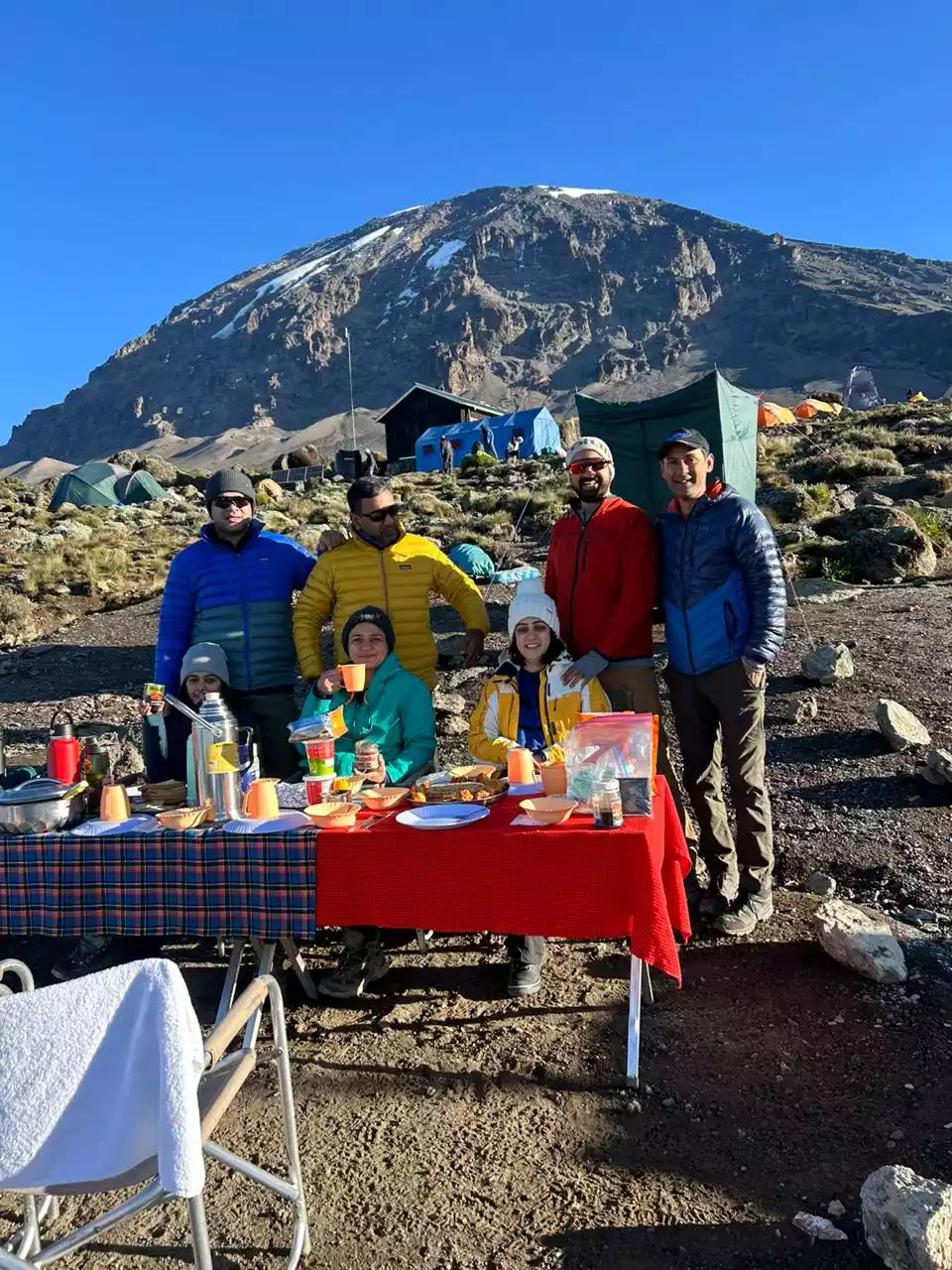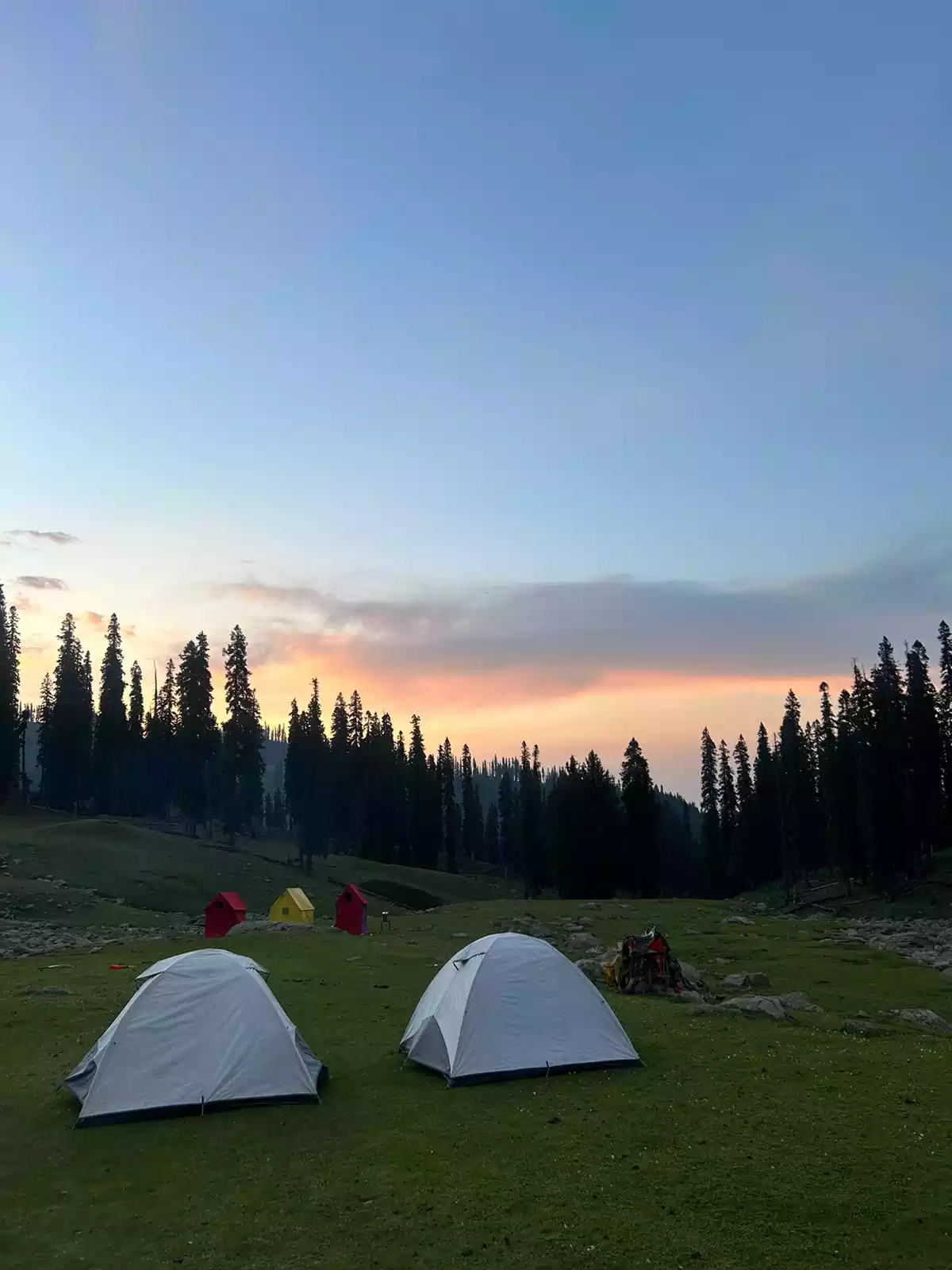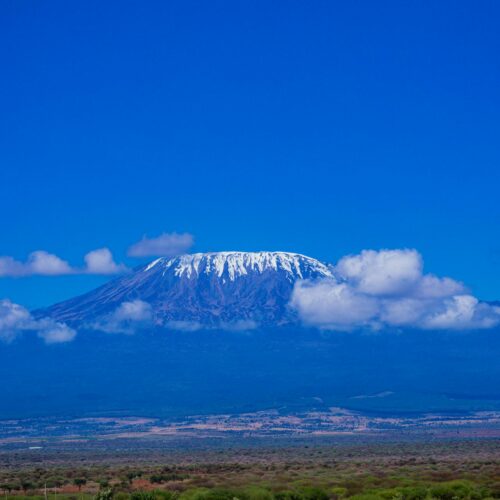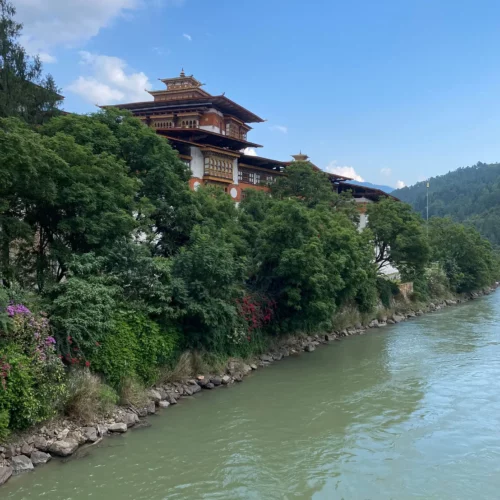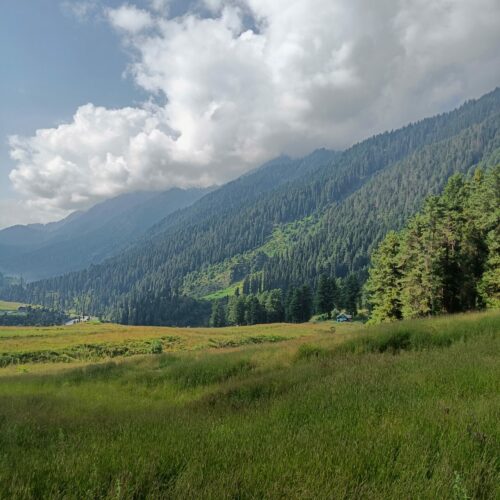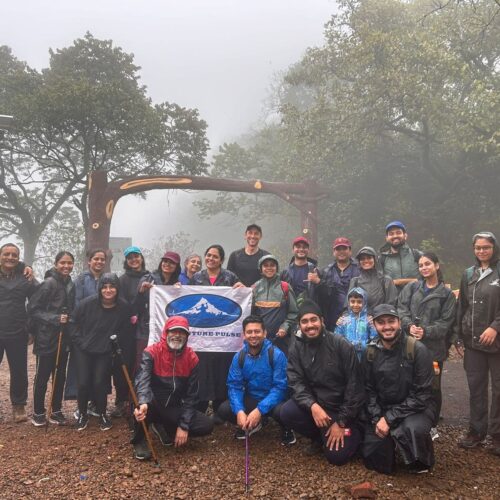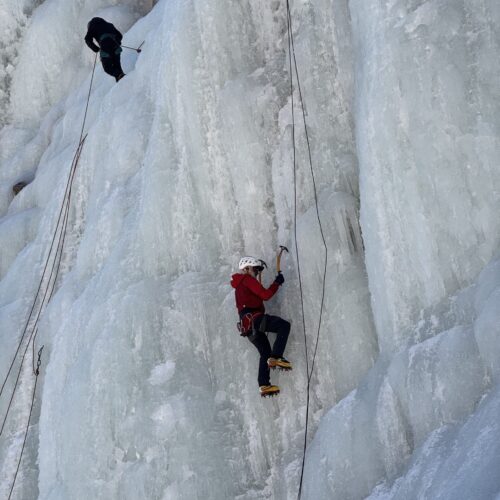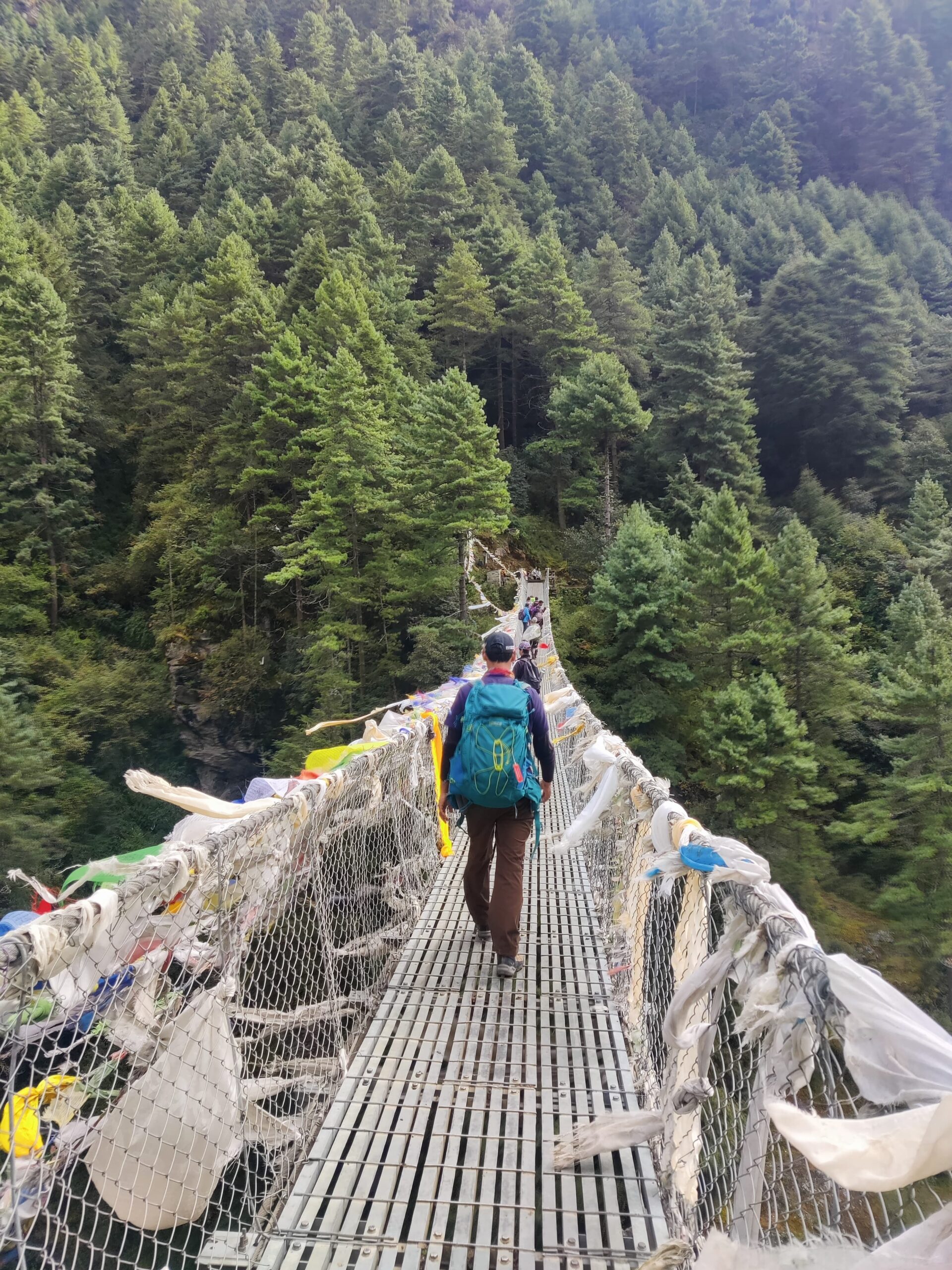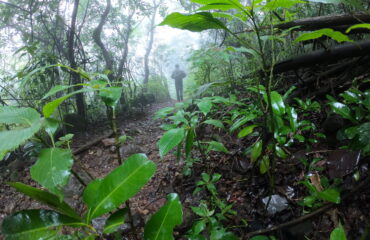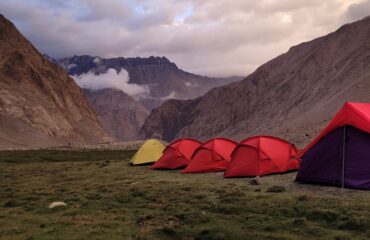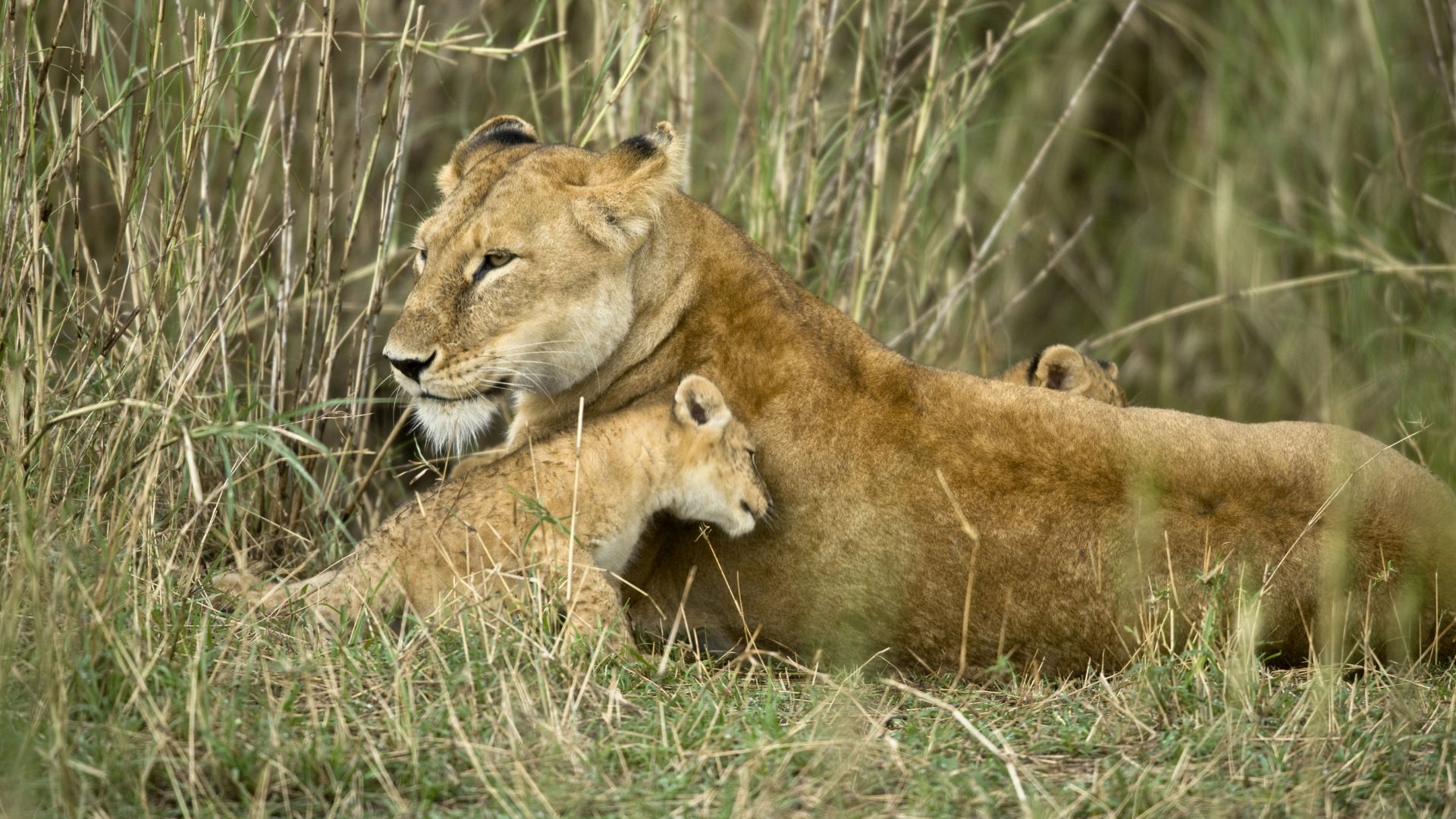
Arusha National Park, Tanzania
Nestled in the northern region of Tanzania, Arusha National Park offers an enchanting mix of diverse ecosystems and a rich array of wildlife, making it one of the country’s hidden gems. Located just 25 kilometers (15 miles) from the town of Arusha, this compact yet captivating park provides a serene escape from the more crowded safari destinations in Tanzania, making it a perfect addition to any northern circuit itinerary. Covering an area of 137 square kilometers (53 square miles), Arusha National Park boasts stunning landscapes, including volcanic peaks, forested slopes, lakes, and open savannahs. The park’s dominant feature is Mount Meru, Tanzania’s second-highest mountain, rising to 4,566 meters (14,980 feet). Visitors can enjoy a variety of experiences, such as hiking, trekking, game drives, and canoeing.
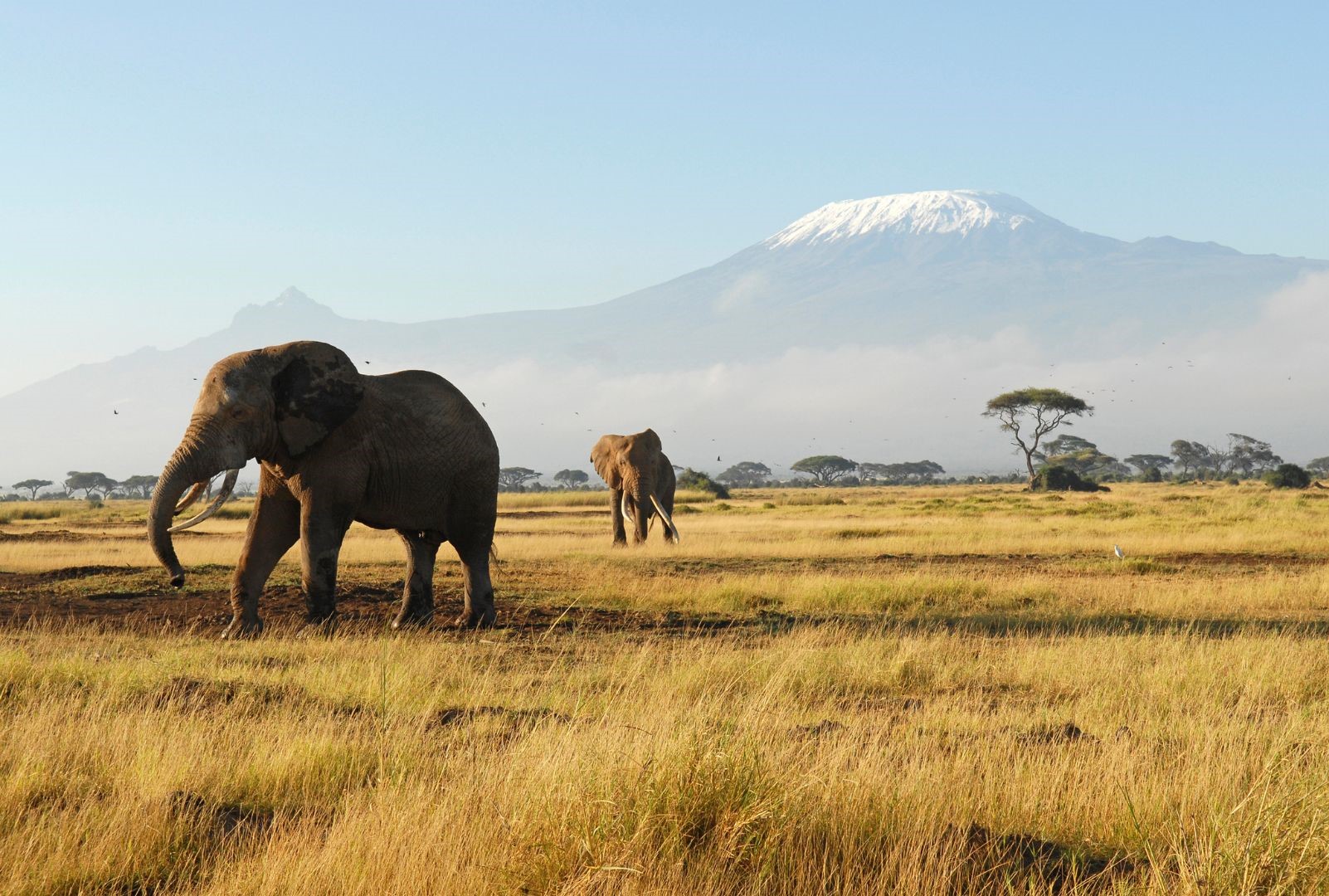
Email Covers – 40
The park hosts a unique blend of wildlife, including giraffes, zebras, and primates like colobus monkeys and baboons. One of its most famous features is the Momella Lakes, a series of seven alkaline lakes that attract large flocks of flamingos, creating a picturesque sight. Additionally, Arusha National Park has earned a reputation as a birdwatcher’s paradise, with over 400 bird species recorded. While the park may not feature the large predator populations found in other Tanzanian parks, its rich biodiversity and breathtaking scenery draw nature enthusiasts seeking a more intimate and peaceful safari experience. Its proximity to Mount Kilimanjaro and the Serengeti also makes it an excellent starting point for a Tanzanian adventure.
How to Reach
Arusha National Park offers easy access from both Arusha town and Kilimanjaro International Airport, making it a convenient destination for travelers exploring northern Tanzania. Located just 25 kilometers (15 miles) from Arusha, the park lies a short 30-45 minute drive away, and taxis or private vehicles are available for hire.
Visitors can also arrange airport transfers from Kilimanjaro International Airport, which is around 60 kilometers (37 miles) away, with the drive typically taking about an hour. For a more personalized experience, many safari operators offer guided tours or safaris, including transportation to the park from Arusha or Moshi, with visits to multiple northern circuit parks.
Regardless of the chosen mode of transport, the journey to Arusha National Park remains relatively easy, offering a scenic transition into the stunning natural landscapes of Tanzania.
Duration of Safaris
The duration of a safari in Arusha National Park varies depending on the type of experience travelers seek. Since the park is relatively small compared to other Tanzanian national parks, many visitors treat it as a half-day or full-day excursion.
Many travelers opt for a half-day safari, which typically lasts around 4 to 5 hours. This allows them to explore the main highlights, including the Momella Lakes, Ngurdoto Crater, and diverse wildlife, before returning to Arusha or another nearby destination.
A full-day safari, lasting 6 to 8 hours, offers a more comprehensive experience, allowing visitors to spend more time in different sections of the park. This is ideal for those who want to maximize their wildlife sightings, enjoy a picnic lunch in a scenic spot, and take in the stunning landscapes at a relaxed pace. Full-day safaris also provide opportunities for activities like canoeing on Momella Lakes or guided walking safaris.
Wildlife Experiences
Arusha National Park boasts a rich diversity of wildlife experiences, making it an exceptional destination for nature enthusiasts. Its varied landscapes, including lush forests, serene lakes, and open grasslands, create the perfect habitat for a wide range of animal species. Here are some of the most remarkable wildlife encounters the park offers:
Giraffe Viewing: Highest Population in Tanzania
Arusha National Park is home to one of the highest densities of giraffes in Tanzania, offering visitors incredible opportunities to observe these graceful animals in their natural habitat. They can watch giraffes elegantly browsing on acacia trees in the open savannah areas, often at close range. The park’s relatively small size, compared to larger national parks, allows for more intimate wildlife encounters, making giraffe viewing a highlight of any safari in Arusha.
Diverse Primate Species
Arusha National Park acts as a haven for primate lovers, hosting a variety of species, including black-and-white colobus monkeys, blue monkeys, and vervet monkeys. The striking colobus monkeys, with their long, flowing black and white fur, frequently appear in the montane forests near Ngurdoto Crater. Visitors can see blue monkeys and vervet monkeys foraging in the trees and along forest edges. Their active and social nature makes them easy to observe, providing visitors with fascinating wildlife encounters.
Abundant Birdlife: Over 400 Species
Arusha National Park serves as a paradise for bird watchers, with over 400 recorded species. The diverse habitats, including forests, lakes, and open grasslands, attract a wide range of birdlife. Momella Lakes serve as a hotspot for water birds such as flamingos, pelicans, herons, and cormorants. Visitors often spot birds of prey, including African fish eagles and augur buzzards, soaring overhead. The park’s woodlands house vibrant species like turacos, hornbills, bee-eaters, and kingfishers. Whether exploring the lakeshores or trekking through the forests, bird enthusiasts can enjoy exceptional sightings throughout the park.
Sightings of Cape Buffalo, Zebras, and Warthogs
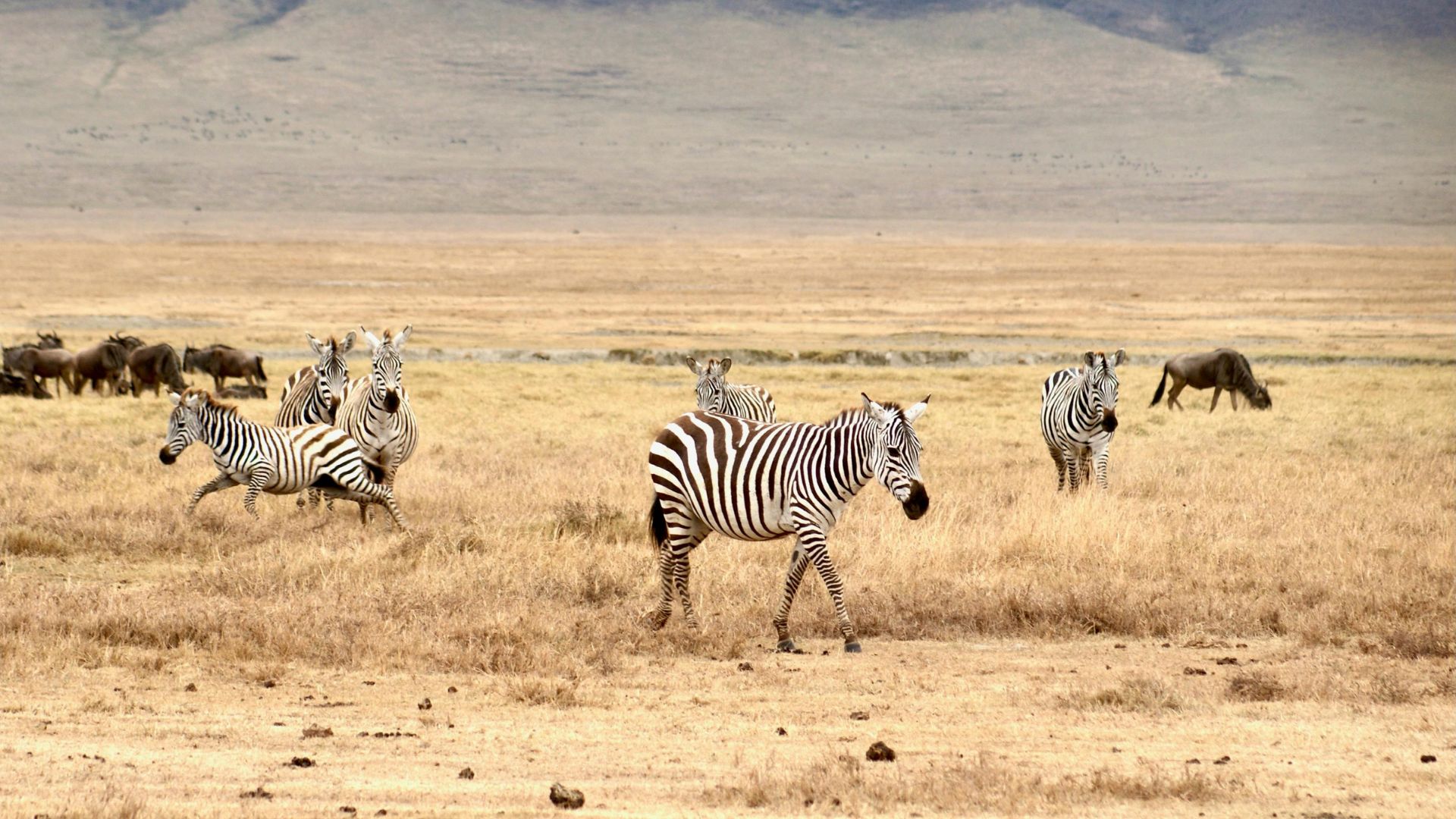
Arusha National Park’s open grasslands and wetlands provide excellent opportunities to spot large herbivores. Visitors can see herds of Cape buffalo grazing near water sources, often accompanied by zebras roaming the plains in search of fresh grass. Warthogs frequently appear in clearings, sometimes amusing visitors with their habit of kneeling while feeding. These animals commonly reside near Momella Lakes and the park’s open savannah areas, making them easy to observe during a safari drive or walking tour.
Hippos and Aquatic Wildlife at Momella Lakes
Momella Lakes offer a prime location for observing hippos as they rest and wallow in the shallow waters. The lakes teem with aquatic life, supporting a variety of fish species that attract a wide range of birdlife, including pelicans, herons, and egrets. Canoe safaris provide visitors with a unique opportunity to observe these fascinating creatures up close while gliding along the tranquil waters. This experience offers a serene and intimate way to explore the park’s rich aquatic ecosystem, making it a must-do for nature enthusiasts.
Elephants and Leopards: Rare Sightings
While visitors see fewer elephants and leopards in Arusha National Park than in other parks, they can still find both species in the park. Leopards, known for their elusive nature, typically reside in dense forests, sometimes lounging in the treetops or moving stealthily through the underbrush. Elephants, though rarer in this park compared to others, occasionally wander through the woodlands and savannahs, offering lucky visitors a thrilling opportunity to witness these majestic creatures in their natural habitat. These rare sightings add an element of excitement and surprise for those exploring the park.
Walking Safari for Close Wildlife Encounters
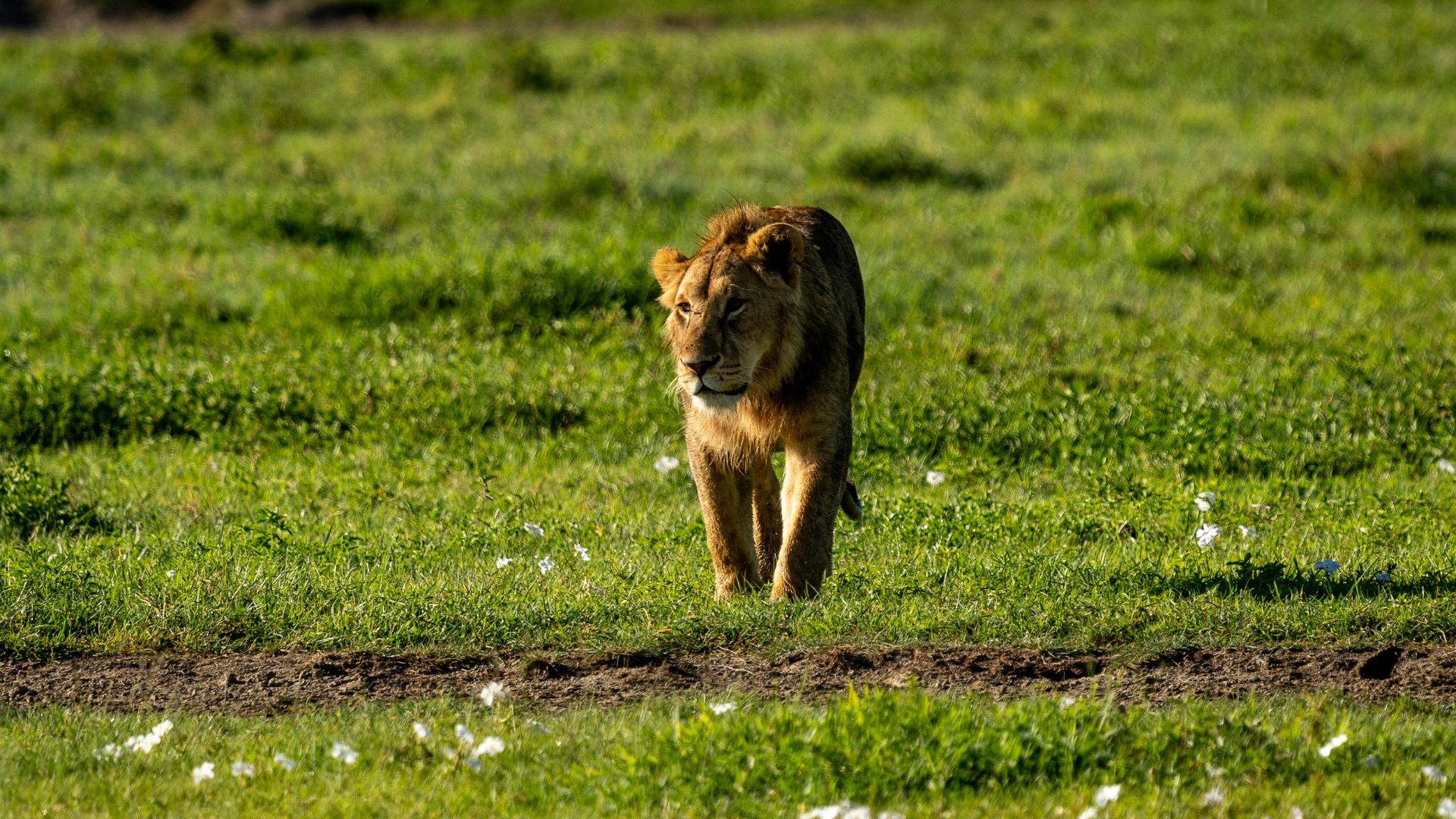
Arusha National Park offers a unique opportunity for visitors to engage in guided walking safaris, which is not allowed in many other parks. This immersive experience allows trekkers to explore the park’s forested areas on foot, providing a rare chance to observe wildlife from a closer and more intimate perspective. Led by experienced and armed rangers, walking safaris provide a more personal connection with nature, allowing visitors to learn about the ecosystem, animal tracks, and plant life along the way. While encountering larger wildlife is less likely on foot, this activity enhances the experience by highlighting the small, often overlooked details of the park’s biodiversity. Walking safaris offer an unforgettable, hands-on adventure into the heart of Arusha National Park.
Unique Nocturnal Wildlife Encounters
Arusha National Park hosts several nocturnal animals that typically remain active at night, including bush babies, aardvarks, and genets. Though these species rarely appear during the day, visitors might spot them at dawn or dusk when they transition between night and day activities. While night safaris remain uncommon, visitors who venture into the park during the early morning or late evening might get a rare glimpse of these elusive creatures. The park’s diverse habitats, ranging from dense forests to open grasslands, create an ideal environment for these nocturnal species to thrive. This makes Arusha National Park a unique destination for those interested in discovering the secretive side of wildlife.
National Park Regulations
- All visitors to Arusha National Park must obtain a permit for entry. The entry fees vary based on nationality, age, and the type of activity planned, such as game drives or walking safaris. Tour operators can arrange permits in advance, or visitors can secure them upon arrival at the park’s entrance gates.
- Visitors must always be accompanied by a licensed guide. Guided tours not only enhance safety but also ensure that visitors follow the park’s regulations. Guides possess knowledge of the park’s wildlife, ecosystems, and cultural significance, offering an enriched and informative experience while keeping visitors safe and minimizing environmental impact.
- Visitors must respect the wildlife by refraining from feeding, disturbing, or attempting to capture animals. Observing animals from a safe distance remains essential to minimize stress on the creatures and ensure both the safety of visitors and the well-being of the wildlife.
- Camping within Arusha National Park is restricted to designated areas only. Campers must follow proper waste disposal procedures, ensuring that the park remains clean and undisturbed.
- Visitors may not carry firearms or weapons within Arusha National Park.
- Vehicles must remain on designated roads and trails within Arusha National Park. Off-road driving is strictly prohibited to protect the park’s delicate ecosystems.
- Littering remains a serious offense and can result in fines, as it negatively impacts the park’s environment and wildlife.
- Visitors may only smoke in designated areas within the park. They must refrain from smoking near vegetation or dry areas due to the high risk of wildfires.
- Visitors must show respect for the local culture and customs of the communities living near the park, particularly the Maasai and other indigenous groups.
- Visitors are encouraged to maintain a quiet and peaceful atmosphere, ensuring both the tranquility of the park and a better experience for everyone.
Network Availability
Arusha National Park, located in northern Tanzania, is a stunning destination known for its diverse landscapes and wildlife. However, due to its remote and natural environment, network availability within the park remains limited, and visitors should prepare for restricted access to mobile networks, internet services, and other communication infrastructure.
Mobile network coverage in Arusha National Park remains limited and varies depending on the location within the park. Near the park’s entrance and in towns like Arusha and Moshi, mobile signals from major providers such as Vodacom, Tigo, and Airtel remain generally reliable. However, as visitors venture deeper into the park, particularly into areas like Ngurdoto Crater or the forested regions around Momella Lakes, the signal weakens significantly.
The dense vegetation, mountainous terrain, and high altitudes often obstruct mobile signals, making communication difficult in remote areas. Visitors should not rely on mobile phones for consistent communication while exploring the park, especially during treks or safaris in isolated areas. Internet connectivity in Arusha National Park remains extremely limited. While hotels and lodges in Arusha and Moshi often provide Wi-Fi, these services are unavailable within the park itself. Some luxury lodges near the park may offer internet access, but it typically remains slow and intermittent due to the park’s remote location and limited bandwidth infrastructure.
Given the limited mobile and internet connectivity, safari operators highly recommend satellite phones for emergency communication. Many safari operators provide satellite phones to their guides to ensure communication in case of emergencies, such as medical issues or evacuation needs.
Tipping Culture
Tipping serves as an integral part of the culture in Tanzania, including in Arusha National Park. The practice is considered as a gesture of appreciation for the services provided by guides, porters, and other staff who contribute to a memorable safari experience.
While tipping remains optional, many service personnel highly appreciate it, as it often forms a significant portion of their income. Understanding the tipping culture in Tanzania helps visitors show gratitude in a fair and respectful manner. Safari guides typically receive tips in Arusha National Park. They play a crucial role in ensuring visitors’ safety, providing insightful commentary on wildlife and landscapes, and enhancing the overall experience during game drives, walking safaris, and other activities.
Tipping guides is customary, with the amount typically ranging between $10 and $20 per day per person, depending on the quality of service, the duration of the safari, and the size of the group. For private guides or exceptional service, visitors should consider tipping towards the higher end of this range. In group tours, tips typically get pooled and divided among participants to ensure fairness.
Parting Thoughts 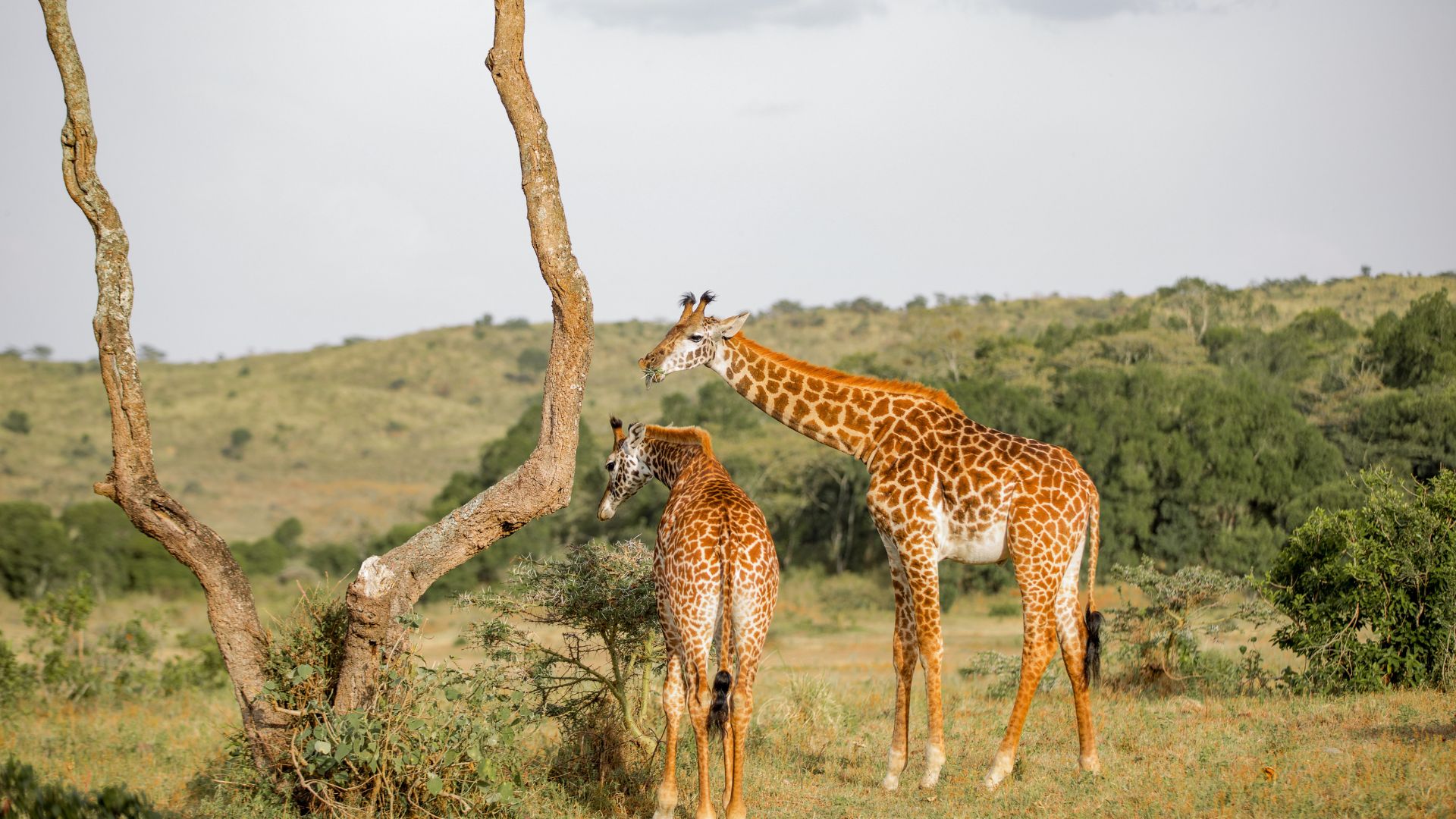
Arusha National Park offers a truly unique and immersive safari experience, perfect for nature enthusiasts seeking both tranquility and adventure. With its diverse ecosystems, rich wildlife, and stunning landscapes, the park provides visitors with an intimate connection to Tanzania’s natural beauty. Moreover, its proximity to iconic landmarks like Mount Kilimanjaro and the Serengeti makes it an excellent addition to any Tanzanian adventure.
Arusha National Park is a must-visit destination that promises unforgettable memories, away from the crowds, offering the perfect blend of wildlife, serenity, and adventure.
Follow us on Social Media – LinkedIn | TripAdvisor | Instagram

